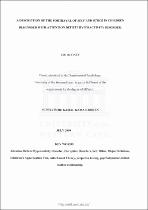| dc.description.abstract | Historically, Attention Deficit Hyperactivity Disorder (ADHD) was termed Minimal Brain Dysfunction or MBD (Barkley, 1997) and this historical diagnostic label is a reflection of one of the consequences of the focus of current academic literature on the neuro-anatomical aetiology of
ADHD: ADHD has often become associated with cognitive or neurological impairment (Biederman & Spencer, 1999). However, although impairment in intellectual functioning can be comorbid with ADHD (Faraone, Biederman, Lehman, Spencer, Norman, Siedman, Kraus, Perrin, Chen & Tsuang. 1993), it is often the case that children diagnosed with ADHD have no significant intellectual impairment and some are classified as intellectually 'gifted' (Baum, Olenchak & Owen, 1998; Hartnett, Nelson & Rinn, 2004; Webb & Latimer, 1993). This suggests that an understanding of cognitive or developmental-neurobiological factors alone cannot comprehensively account for the symptom triad of impulsivity, inattention and hyperactivity characteristic of ADHD. | en_US |

